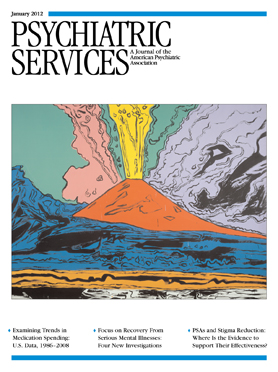OECD Report Highlights Impact of Mental Illness on the Workforce, Recommends Policy Changes
One in five workers has a mental disorder, such as depression or anxiety. Among people with common mental disorders, the employment rate is 55%–70%—about 15 percentage points lower than the rate among people without a mental disorder. Currently, between one-third and one-half of all new claims for disability benefits are for reasons of mental illness, and among young adults that proportion is nearly three-quarters. These statistics are included in Sick on the Job? Myths and Realities About Mental Health and Work, a report released in mid-December by the Organisation for Economic Co-operation and Development (OECD).
The report is aimed at policy makers in the OECD's 34 member countries, which include the United States. It challenges myths about mental health and summarizes what is known—and what further information is required—about the impact of mental disorders on workers and the workplace and calls for policy changes to improve the inclusion of people with mental disorders in the labor market.
The report distinguishes between common mental disorders, with mild or moderate symptoms, and severe mental disorders, with much more disabling symptoms. Because common mental disorders are more prevalent—and more prevalent in the workforce—their overall cost to society is higher. Lost productivity among workers is a key factor. Workers with mental disorders are absent from work for health reasons more often than other workers. According to research cited in the report, the incidence of absence in a four-week period was 28% for workers with common mental disorders, compared with 19% for those with no mental disorder. Underperformance on the job is an even more serious concern. Sixty-nine percent of those with common mental disorders reported reduced productivity in the past four weeks, compared with 26% of those without a mental disorder.
A key area for policy change is the structure of unemployment benefits. Inactive people of working age who have a mental disorder are often receiving disability benefits. However, because people with common mental disorders have a closer connection to the labor market, they receive other types of benefits about twice as often as disability benefits. Thus restructuring unemployment benefits, as well as social assistance and single-parent benefits, is as important to the creation of better policies for people with common mental disorders as focusing on disability benefits. The importance of this issue is overlooked, the report notes; for example, public employment services generally have no specific tools for identifying mental illness among clients, especially among those with long-term unemployment.
Developing policies to restructure disability benefits is an urgent matter, according to the report, in view of recent increases in most OECD countries in the percentage of disability benefit claims based on a mental disorder. Among claimants with multiple comorbid conditions, there appears to have been a shift over time toward taking the mental disorder as the primary reason for the claimant's reduced work capacity. The report notes that two forces appear to have converged: a greater awareness of the prevalence of mental illness and an acceptance of a “capacity-limiting view” of mental illness. Thus the basis of claims may have shifted, but the disability benefits system may not necessarily be facing a different clientele. The challenges for the system are to identify claimants with mental disorders and then take the right steps in terms of work capacity assessment, needs assessments, and supports. Policies should focus on keeping people in the labor force and preventing them from moving into lifetime disability benefits. Supported employment approaches, which are effective for people with severe mental disorders, have considerable potential for helping people with common mental disorders back into employment, the report notes.
The report includes many recommendations for improving mental health care, including two important system-related challenges. First, mental health systems are focused on serving people with severe mental disorders, and they are often not well equipped for adequately addressing the needs of people with common mental disorders or reaching them sufficiently. This is not an efficient use of resources, the report notes. Second, mental health systems have not engaged employers and companies as real partners, and they have not taken sufficient responsibility for the employment outcomes of their clients. The report points out that mental health care quality indicators developed to date do not address employment.
The report, which is the latest publication from the OECD's “Mental Health and Work Project,” is available on the OECD Web site at www.oecd.org.



